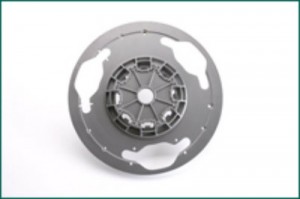Speaking in broad high-level terms, rapid tooling techniques come down to two main approaches — indirect and direct.
Here are some quick definitions.
- Indirect tooling refers to pattern-based methods where the tool is made from a prototype depicting the part.
- Direct tooling refers to a mold, insert or other component made directly by a rapid prototyping machine.
Today’s technologies for rapid tooling techniques
Many technologies are at work today, but the primary tools used include stereolithography, laser sintering, fused deposition and 3D printing.
Most of these processes are used for indirect tooling, while the majority of direct tooling techniques use metal-based technologies like the laser sintering mentioned above.
RTV molding
The most common type of indirect tooling is Room Temperature Vulcanization (RTV) molding. Most designers turn to this technique for a variety of good reasons. The process is a fast, accurate and inexpensive way to develop prototypes and make good duplicates prior to final production.
The silicon molds capture details and textures present in the part, while being forgiving of part geometry when it’s time to remove it from the mold. When the molds are complete, they can be used to produce short runs of urethane castings with many different material properties.
As we all know, urethane castings are a popular material for product prototypes due to their speed in development and low cost. They can also mimic elastomers with structural properties similar to high-impact styrene. But best of all, these castings can be machined, sanded, glued and painted.
Speed and flexibility
The most impressive aspect of all rapid tooling techniques is without a doubt the speed in which the new parts can come to life. And designers love it because they don’t need to be limited by complexity.
The lightweight silicon molds used in RTV can be adapted and used to pick up on the tiniest detail. Take advantage of this advanced process by contacting Product Development Solutions for your next project at 763-780-0131.

